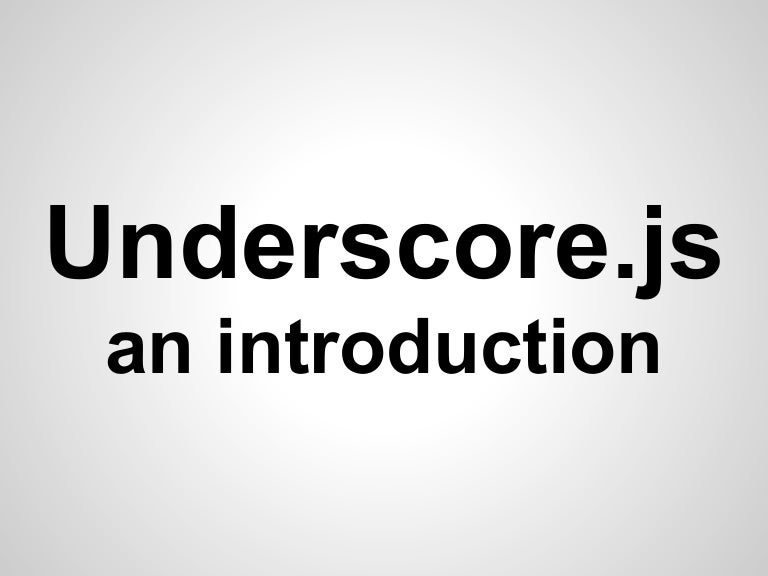
npm install underscore yarn add underscore Key Underscore.js Functions and Features each ( numbers, function ( num ) ) Īlternatively, you can also include underscore.js via a package manager like npm or yarn.

Here's an example of how to use the each function to iterate over an array of numbers: var numbers = _. Once you've included the library, you can start using it in your JavaScript code. This can be done by downloading it from the official website and including it in your project's file structure. You'll first need to include the library in your HTML file. You want to keep the library dependencies at a minimum: Underscore.js is a lightweight library that has a small footprint. Your project has specific requirements that are not met by other libraries: Underscore.js has been around for over a decade and provides a wide range of functional programming helpers and utility functions that may not be available in other libraries. It may be easier to continue using the library instead of switching to a different library or rewriting existing code. If you are working on a project that was built using Underscore.js. Here are a few use cases you should consider: Using Underscore.js is largely dependent on the specific needs of your project. These libraries provide a similar set of features and have a more robust set of functional programming helpers. With the rise of functional programming libraries like Lodash and Ramda, Underscore.js may not be as widely used as it once was. The introduction of ECMAScript 6 (ES6) brought many new features, such as arrow functions, template literals, and the spread operator, which provide similar functionality. As JavaScript evolved, many of the features are now either included in the language itself or available in other libraries.

Underscore.js was developed in 2009 and has been widely used since then.


 0 kommentar(er)
0 kommentar(er)
